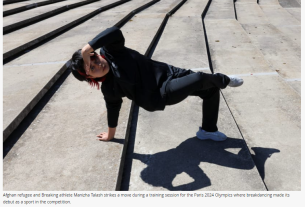Across the billions of galaxies and stars in the universe, only one place is known to host life – Earth. Yet the hope of finding other living worlds drives scientists to pursue ever-smarter methods in their search.
Despite cataloguing roughly 6 000 exoplanets, a replica of Earth – a planet similar in size that orbits a star like our Sun in a similar position to us – has yet to be identified. This is not for lack of effort. Rather, it reflects the challenges involved.
While scientists have found rocky planets similar in size to Earth around smaller red dwarf stars, those around sun-like stars are much harder to detect because they appear comparatively smaller against their brighter host stars. However, a new telescope could help researchers in this search.
Doing so could expand our search for habitability in the galaxy. We know that Earth is just the right size and distance from its host star to support water and life. Is the same true elsewhere?
Cutting through the noise
Dr Nuno Santos, a leading Portuguese astrophysicist and a driving force behind exoplanet exploration in Europe, is heading up an EU-funded team of researchers developing new observational tools. They will help cut through the interference created by these distant fiery “suns”.
One of the main hurdles is the “noise” generated by stars such as our Sun.
The churning plasma and shifting magnetic fields on their surfaces produce a series of phenomena in the stellar atmospheres, including dark spots and a “granulation” pattern – much like the rolling boil of water. This obscures the faint signal that marks a planet crossing in front of its star.
“If you look at the surface of the Sun, it looks like a boiling pot of water, speckled with darker and brighter regions,” Santos said. “The big issue is that we don’t really understand how to diagnose this noise that comes from the star.”
“
If you look at the surface of the Sun, it looks like a boiling pot of water.
Based at the Institute for Astrophysics and Space Sciences in Portugal, Santos and his team are building a brand-new telescope called PoET – Paranal solar Espresso Telescope – as part of an EU-funded initiative named FIERCE, which runs until September 2027.
This compact instrument measures just 60 centimetres across and is destined for Chile, where it will operate alongside the European Southern Observatory’s Very Large Telescope (VLT), stationed on a mountain in the Atacama Desert.
Rather than tracking planets around distant stars, PoET will focus on our own Sun, analysing the noise produced by granulation and related processes.
The solar telescope will connect with another space-exploring instrument stationed in Chile, called ESPRESSO – the Echelle SPectrograph for Rocky Exoplanets and Stable Spectroscopic Observations. It is specifically designed to separate starlight into its different colours and study the planets that orbit distant stars.
“By connecting ESPRESSO to solar observations, we hope to understand exactly how the Sun is behaving in different regions,” said Santos.
This will yield a detailed spectrum of chemical elements coming from the Sun, revealing how they change as the surface shifts. Ultimately, these findings will help astronomers filter out noise from observations of other Sun-like stars, making it easier to detect distant, Earth-like planets.
Preparing for PLATO
Observations with PoET are expected to begin by the end of 2025 and continue for three years. The telescope uses an optical configuration to block all but the part of the Sun under study.
PoET will make daytime observations with ESPRESSO operated remotely by Santos from Porto. At night, ESPRESSO will return to its main role with the VLT.
This groundwork is particularly crucial as the European Space Agency prepares for its PLATO (PLAnetary Transits and Oscillations of stars) mission, launching in 2026.
“
The quest for earths orbiting other suns is one of the big questions we have.
The PLATO space telescope will use 26 cameras to search for planets orbiting a million stars, focusing on Earth-like worlds around Sun-like stars. Its instruments will measure each planet’s radius, enabling scientists to determine density and composition – even across hundreds or thousands of light years.
Reducing stellar noise with PoET will be essential for PLATO to take precise measurements. “We have to find a way to get rid of this noise to be able to fully exploit the data from the upcoming PLATO mission,” said Santos.
“Our hope and our expectation is that PoET will learn enough so that we’ll be able to reduce the noise to the needed level.”
Bolder efforts ahead
FIERCE and PoET exist thanks to support from the European Research Council (ERC). “We could not do this without the ERC,” said Santos.
His team’s work gives Europe a vital role in the global hunt for habitable worlds, with missions like PLATO promising exciting new discoveries.
If all proceeds as planned, PoET could provide results by mid-2026, offering vital data for PLATO once it is launched.
Further ahead, missions such as NASA’s Habitable Worlds Observatory, expected in the 2040s, and the next big European telescope, due to be completed by 2030, will attempt to directly image some of the potentially habitable planets found by PLATO and look for signs of life.
But before then, astronomers must discover how many such worlds exist, and where to find them. “The quest for earths orbiting other suns is one of the big questions we have,” Santos said.
Telescopes like PoET and PLATO will push the boundaries of what is possible in our space quests. Their progress will increase our understanding of the cosmos as we uncover more about our galaxy, but also about the potential for life far beyond our home.
Research in this article was funded by the EU’s Horizon Programme. The views of the interviewees don’t necessarily reflect those of the European Commission. If you liked this article, please consider sharing it on social media.



